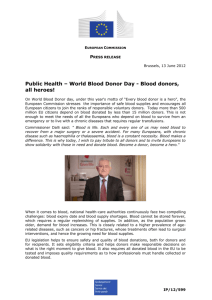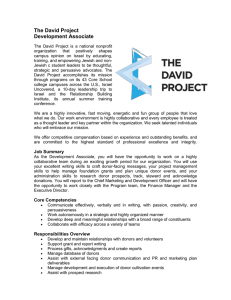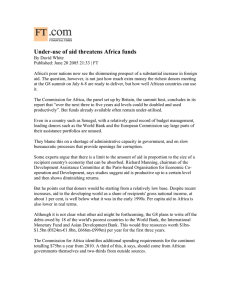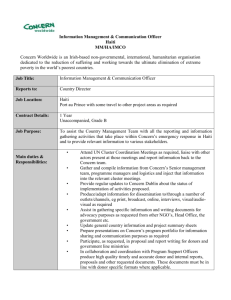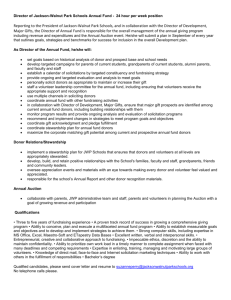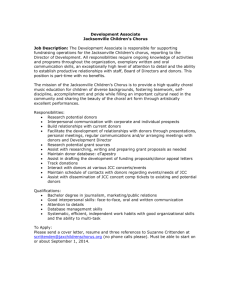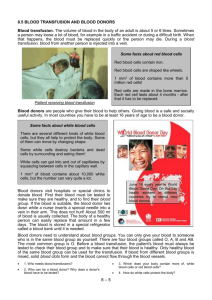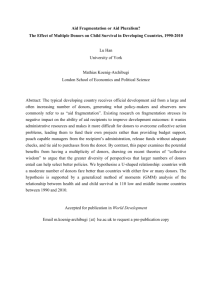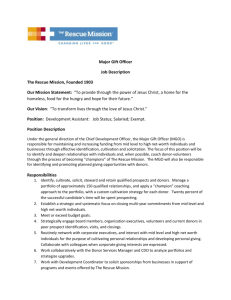the presentation
advertisement
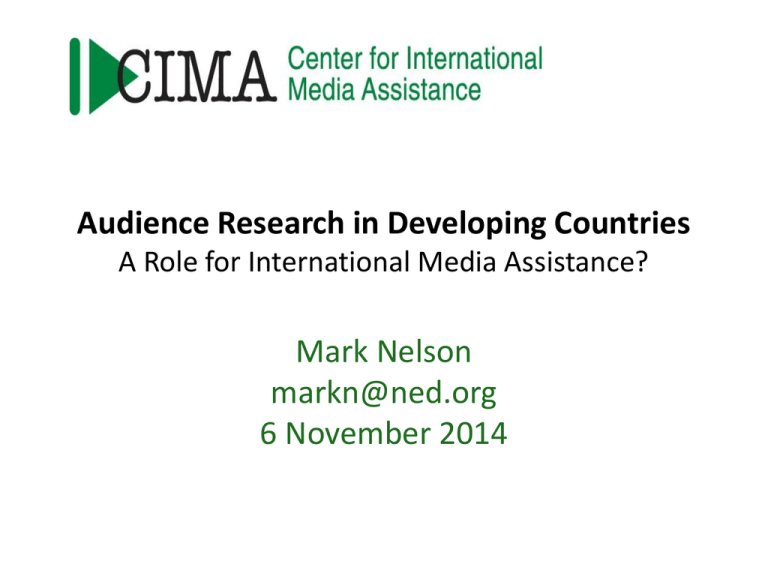
Audience Research in Developing Countries A Role for International Media Assistance? Mark Nelson markn@ned.org 6 November 2014 Press freedom is declining Freedom of the Press Index 100 90 80 70 60 50 40 30 Freedom House data rescaled 100=best 20 10 0 1996 1997 1998 1999 2000 2001 2002 2003 2004 2005 2006 2007 2008 2009 2010 2011 Country level media systems have stagnated Average MSI Score Europe/Eurasia: Selected Years 2.5 2 1.5 1 0.5 0 2001 2003 2005 2006 2008 2009 2011 2013 A sliver of development assistance Donor spending on “media” $625 million (est.) Global ODA $135 billion Rethinking Media Development: Media Map Project • Surveyed existing data and media sector indicators • Country case studies on effectiveness of donors • A look at how public & private sectors work together (or not) in media development Findings on Donor Support • Lack of sector diagnostics or use of data—neither partners nor donors • Failure to integrate media into broader devt agenda • Over-reliance on training as an instrument • Inadequate scale Instead, often useful but not addressing systemic issues MSI Objective 4: “Media firms well managed, allowing editorial independence” media are selfsustaining enterprises revenue comes from multiple sources advertising market institutions in place government subsidies don’t distort market advertising revenue % in line with standards other market data reliably produced market research used for tracking outcomes Business management: Europe-Eurasia No countries in “sustainable” category Unsustainable Unsustainable Near sustainability anti-free press [0-1.0] mixed system [1.0-2.0] [2.01-3.0] • Turkmenistan • Azerbaijan • Belarus • Uzbekistan • Macedonia • Russia • Tajikistan • Ukraine • Albania • Armenia • Bosnia • Bulgaria • Kazakhstan • Kyrgyzstan • Moldova • Montenegro • Serbia • Croatia • Georgia • Kosovo • Romania The changing environment for media in developing countries Unstable business model & inadequate finance Exploding connectivity & changing media habits Growing demand for quality management & data Report topics Models of audience research Audience data and its uses • Business development • Audience development • Informing and evaluation of media development efforts • Limits to audience research as a tool for media development Conclusions and recommendations The value of audience research Country level • Levels playing field, enhances business climate • Reduces corruption Firm level • Helps improve business model content, reach, relevance & loyalty; a tool for learning Owners and investors Donors & implementers • Strengthens trust in market & investment climate • Creates more transparent marketplace • Can strengthen effectiveness of support • Enhances learning from success and failure Substantial Shifts in Global Ad Spending Substantial Shifts in Global Ad Spending Mobile internet from 2.7% to 7.6% Institutionalizing audience research Country capacity Sector capacity Sector governance Market transparency & integrity Four key recommendations Research & data Technical support Advocacy Working group Four key recommendations Research & data Advocacy Technical support Working group More questions than answers Working group • How do countries get sustainable audience research systems; more open data, transparency? • What role should outside partners play? • What is best sequencing? • What governance models for various country types? • How can we better capture the learning from each other?

